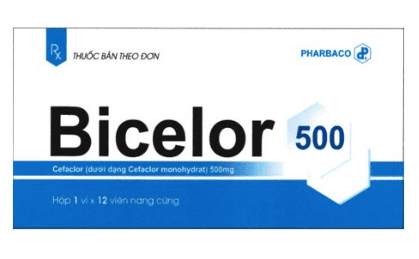This is an automatically translated article.
Midasol is a prescription medicine that is used in certain circumstances. So what is the drug Midasol, what disease does Midasol treat and how to use this drug?1. What is Midasol?
Midasol is an adjunct drug in the treatment of urinary tract diseases. Midasol is prepared in the form of sugar coated tablets, the main ingredients in each tablet are:Methylene blue 20 mg Bromo camphor 20 mg Methylene blue is an active ingredient with mild antiseptic effect and tissue staining. This active substance is irreversibly bound to the viral nucleic acid and it breaks down the virus molecule when exposed to light. Bromo camphor is an active ingredient that has analgesic and mild antiseptic effects in the lower urinary tract.
Midasol is indicated in the following cases:
Support in the treatment of inflammation, pain in the pathology of recurrent lower urinary tract infections without complications. Midasol is contraindicated in the following cases:
People with hypersensitivity to any ingredient of the drug. Children under 15 years old. People with kidney failure. Pregnant and lactating women. People with glucose-6-phosphate dehydrogenase deficiency. Some notes when using Midasol:
Prolonged use of Midasol can lead to anemia because methylene blue in the drug increases red blood cell destruction. Reduce the dose of Midasol for patients with weak renal function. Midasol contains sucrose, so it should not be used in patients with rare hereditary problems of fructose intolerance, glucose-galactose malabsorption or sucrase-isomaltase deficiency. The patente blue color in Midasol can cause allergic reactions, so it should be used with caution.
2. Dosage and how to use Midasol
Midasol is used orally, taken after eating.Dosage of Midasol drug should be according to the doctor's prescription, the reference dose is as follows:
Adults and children over 15 years old: Use a dose of 6-9 tablets/day, divided into 2-3 times. Midasol overdose can cause the following symptoms:
Methylene blue increases blood methemoglobin, restlessness, difficulty breathing, irritation of the urinary tract. Treat by induction of vomiting or gastric lavage, use of activated charcoal or bleach, and hemodialysis if necessary. Bromo camphor overdose causes vomiting, convulsions. Treat with bowel lavage and symptomatic treatment. Missing a dose of Midasol: It's best to take it on time as your doctor prescribes. Taking your medicine at the right time will help you get the most out of it. Usually, you can take Midasol 1 - 2 hours apart from the time ordered by your doctor. Do not take the missed dose when it is almost time for the next dose.
3. Side effects of the drug Midasol
The side effects of Midasol are mainly related to Methylene blue. Methylene blue is usually only used for a short time. This active ingredient can cause anemia and some gastrointestinal symptoms when taken orally.Common side effects of Midasol include:
Anemia, hemolysis. Less common side effects of Midasol include:
Nausea, vomiting. Stomachache. Dizzy . Headache. Fever. Lower blood pressure. Pain in front of the heart. Bladder irritation. Skin is blue. If you experience any side effects of Midasol, you need to tell your doctor immediately, or go to the nearest medical facility for timely treatment.
4. Interaction of Midasol with other drugs
Currently, there are no reports of drug interactions Midasol with other drugs.Methylene blue in Midasol is incompatible with alkalis, dichromates, iodides, oxidizing agents and reducing agents.
Please dial HOTLINE for more information or register for an appointment HERE. Download MyVinmec app to make appointments faster and to manage your bookings easily.













